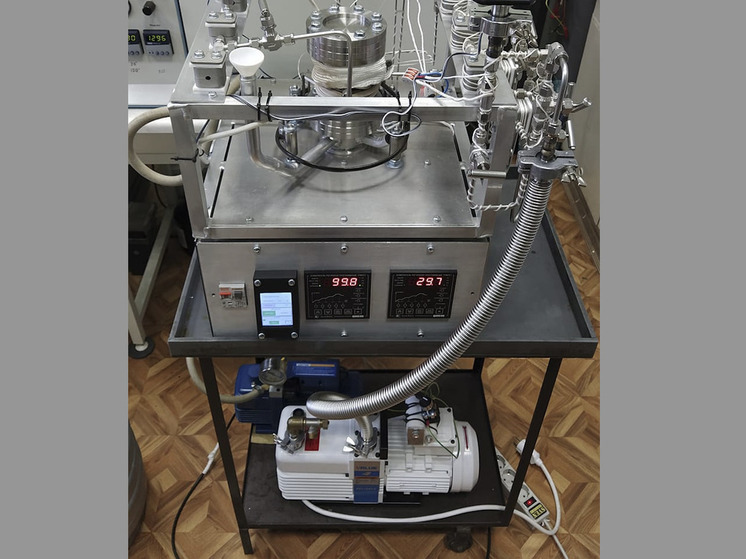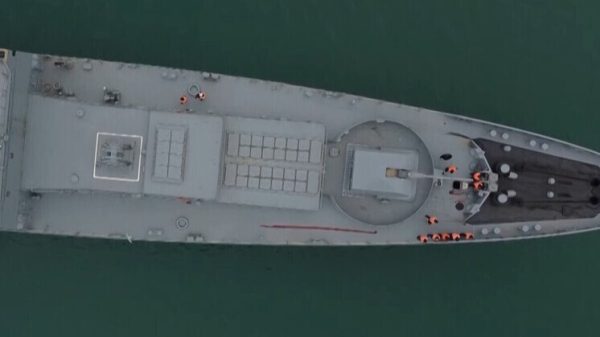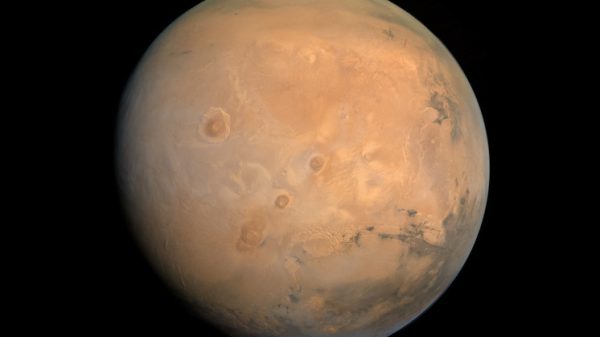We are talking about identifying hydrogen isotopes in the ice of the lunar regolith
A unique experimental setup for determining the isotopic composition of lunar water was created at the Institute of Geochemistry and Analytical Chemistry named after. IN AND. Vernadsky RAS. Previously, scientists could not distinguish “light” lunar water from “heavy” water. But its future use will depend on this! A member of the development group, senior researcher at the Laboratory of Carbon Geochemistry named after. EM. Galimova, candidate of physical and mathematical sciences Sergey VOROPAEV.
 The attachment created by GEOKHI employees is under the mass spectrometer, white. Photo: A. Krivenko
The attachment created by GEOKHI employees is under the mass spectrometer, white. Photo: A. Krivenko
– Water ice discovered on the Moon is a potentially important resource for the functioning of a future lunar base. However, for its correct use it is very important to know the isotopic composition, explains Sergei Alexandrovich. – So “light” (isotopically light) ice (H2O) can become a source of drinking water on the Moon, and “heavy” (D2O) ice is deadly to health, but can also be used for rocket fuel.
— The device, manufactured by us under the leadership of Doctor of Technical Sciences Vyacheslav Sergeevich Sevastyanov, is, by and large, an attachment to the mass spectrometer that we have in our laboratory. It allows you to measure the content of “heavy” isotopes in lunar ice — deuterium (D), and “light” isotopes — protium (H).
In our large American-made device, we have been separating isotopes of water using a magnetic field for a long time. But this concerns standard, earthly tasks. Now we are faced with a non-standard, cosmic task related to the presence of a vacuum on the Moon and a certain lighting regime. Therefore, it was necessary to create an attachment in addition to the large mass spectrometer. If they bring us lunar material, we will put it in a separate vacuum chamber and heat it up a little — to -20 degrees (because regolith is usually transported at -70 degrees). Various gases will eventually begin to escape from the ice. We are interested in water that is blown into a special device, and we determine its molecular composition.
– Carbonaceous chondrites (meteorites that fall on it in large quantities) can be sources of “light” water. Comets, on the contrary, contain a large amount of “heavy” water.
– It is considered “dead”, extremely harmful to living organisms. Biologists once conducted an experiment: mice were given a solution of water with different deuterium contents. For example, they gave a solution consisting of “light” and “heavy” water in a combination of 70:30. And this 30 percent of deuterium was enough for the mouse to die after drinking the liquid only once. If there was a little less than thirty percent of “heavy” water, the rodents’ internal processes slowed down, for example, they stopped breeding.
– Not every one. The quality of the ice and its isotopic composition are important. “Heavy” water is only suitable for the production of rocket fuel; it cannot even be used to water plants in a lunar greenhouse.
– There is no such device yet, but, knowing the principle, what it should be , we will soon begin to develop it.
Our ordinary earthly water is very “light”. For every million ordinary light molecules there are only two thousand “heavy” ones.
























































Свежие комментарии